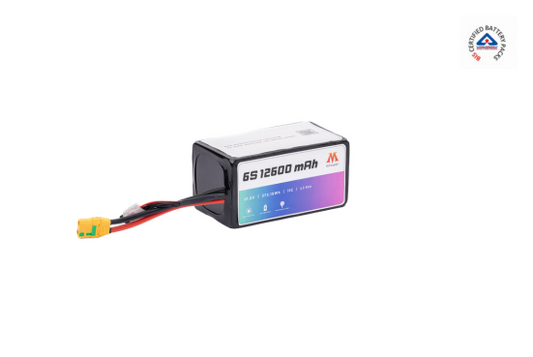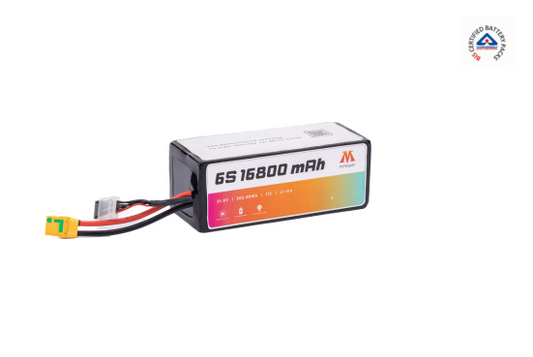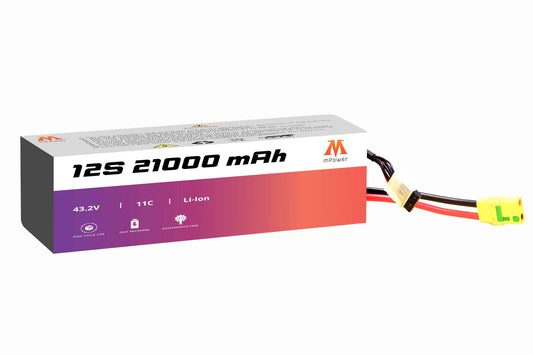
Drones are now widely used in many different industries, transforming tasks in filmmaking, construction, agriculture, and many other areas. Drone operations must be conducted safely and effectively because they primarily rely on battery power for flight. It is imperative to comprehend how weather conditions impact battery performance.
Drones are employed to survey construction projects, track developments, and examine difficult-to-reach places. Drones are used by farmers to map fields, evaluate crop health, and administer fertilizer and insecticides precisely. Drone deliveries of packages and even medical supplies in rural areas are being investigated by businesses. Drone technology is useful for search and rescue operations, fire monitoring, and disaster response initiatives. Let’s delve into the impact of weather conditions on drone battery performance.
Factors Affecting Drone Battery Performance
Temperature:
Drone batteries may suffer from excessive heat. High temperatures quicken the battery's chemical processes, which shortens flight durations and speeds up power depletion. Heat can also harm battery cells, shortening their total life.
The opposite is true in colder climates. The chemical reactions in batteries are slowed down by cold temperatures, which reduces their efficiency in delivering power. This results in drone performance that is slow and shorter flying periods.
Humidity:
Elevated humidity levels add additional factors to the calculation. Although atmospheric moisture can damage electrical components and cause short circuits, moderate humidity may not be a major hazard. Furthermore, the performance of the battery itself may be impacted by moisture.
The Windy Challenge:
Drone operations face a particular problem due to wind. The drone's motors must work harder in strong winds in order to maintain stability and make course corrections. Battery life is shortened and power consumption rises as a result of this increased workload. Drone control becomes challenging and flight duration might be greatly reduced while operating in strong gusts.
Precipitation's No-Fly Zone:
Drone flight is seriously endangered by rain, snow, and other types of precipitation. Moisture can harm delicate electronics, sometimes resulting in a malfunction or even a crash. Furthermore, the weight of ice or snow buildup might overload the drone's motors, impairing flight performance and possibly posing a safety risk. When there is precipitation, it is advisable to completely avoid using drones for flight.
Specific Weather Conditions and Their Effects
Impact of Hot Weather
High temperature increased chemical activity leads to faster power depletion, resulting in significantly shorter flights compared to cooler conditions. Pilots need to be prepared for dramatically reduced flight times when operating in hot weather.
The Chilling Effect of Low Temperatures
Cold temperatures can also reduce the usable capacity of a drone battery. Even if a fully charged battery is used in cold weather, it may only deliver a fraction of its normal power output, leading to shorter flights and potentially leaving the drone stranded mid-mission.
The Moisture Challenge
Condensation on the battery itself can create a path for electrical current to flow unexpectedly, leading to a short circuit. This can damage the battery and other electronic components in the drone.
Windy Conditions
Wind resistance forces the drone's motors to work harder to maintain stability and course correction. This increased workload translates to a significant increase in power consumption, draining the battery much faster than in calm conditions.
The extra effort required to combat wind resistance directly impacts flight time. Pilots can expect considerably shorter flights when operating in windy conditions.
Tips for Maximizing Drone Battery Performance in Different Weather Conditions
Hot Weather Condition:
- Whenever possible, avoid flying drones in direct sunlight. Park your drone in a shaded area while not in use. Sun exposure not only impacts batteries but can also overheat internal components.
- Many drones have built-in battery temperature gauges. Keep an eye on the temperature and avoid flying if the battery gets too hot. Land and allow it to cool down before resuming operations.
- If possible, schedule your flights for cooler times of the day, such as early mornings or evenings, when temperatures are lower.
Cold Weather Condition:
- If possible, consider pre-heating your drone batteries using a battery warmer designed specifically for your drone model. This will help the battery perform more efficiently.
- Some drone batteries come with insulated battery covers. Using these can help retain heat and improve battery performance in cold weather.
- Be prepared for shorter flight times in cold weather. Carry spare batteries and plan shorter missions to avoid getting caught with a low battery in a remote location.
Humidity Condition:
- If you must fly in humid conditions, consider using a waterproof drone case. This will help to protect the drone's electrical components from moisture damage.
- After flying in humid conditions, thoroughly dry your drone and batteries with a clean, lint-free cloth. Pay particular attention to any areas where moisture might accumulate.
- Store your drone and batteries in a cool, dry place when not in use. Avoid storing them in extreme temperatures or direct sunlight.
Windy Weather Condition:
- Strong winds can significantly impact flight control and reduce drone battery life. When possible, fly your drone at lower altitudes where wind speeds are typically lower.
- If wind speeds are too high, it's best to postpone your flight. Pushing your drone in windy conditions can be dangerous and lead to a crash.
- Some high-end drones are specifically designed for windy conditions. If you have a wind-resistant drone, you may be able to fly in moderate winds with minimal impact on Li ion drone battery life.
How mPower Drone Batteries Address Weather Challenges
For drone pilots seeking reliable and long-lasting batteries, consider mPower. Our drone battery is specifically designed to meet the demands of various weather conditions. The battery offers:
- Extended flight times to cover larger areas and enhance operational efficiency.
- Durability in extreme conditions for reliable performance in diverse environments.
- Fast charging capabilities to minimize downtime between missions.
By choosing our Li ion drone battery, you can conquer the challenges of weather and unlock the full potential of your drone. Visit their website to learn more about how mPower batteries can elevate your drone operations to new heights!












